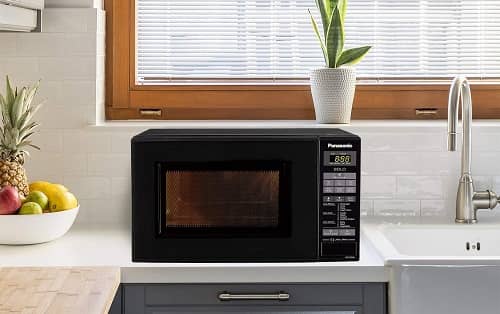Make sure it’s not a setting that’s causing your microwave not to heat before proceeding (timer, low power). Switch the power on and off, and then test with water again. If the microwave is still not heating, the most likely causes are door switches, the high-voltage diodes, or the magnetron in the microwave. If you’re not sure about something, consult an expert.

Let’s learn about the reasons why Microwave Oven stops heating and how you can fix it
High-voltage diode
A high voltage diode in your microwave oven may be malfunctioning if the microwave oven does not heat. This component contributes to the generation of the high voltage required to power the magnetron. Because of the high voltage diode positioned near the magnetron as well as its high voltage capacitor, it will be necessary to remove the cabinet in order to gain access. In order to avoid an electrical shock, unplug the power and drain its high voltage capacitor at the same time.
Using a multimeter, you can determine whether or not the diode is still operational. The polarity of diodes is important, and you’ll see low resistance when the meter leads are pointed in one way and greater resistance when the meter leads are pointed in the other direction. For diodes and rectifiers, the majority of multi-meters will also have a particular setting.
This means that if its high voltage diode has poor resistance in both ways and no consistency at all, it will require replacement. Upon determining that high voltage diode testing is satisfactory, you will need to verify whether or not electricity is being provided to the circuit. This is a high-voltage circuit, and any additional testing must only be carried out by a certified technician in this situation.
Door Switches
If the door switch on a microwave fails, the entire microwave will be turned off. Because microwaves have the potential to injure us, it is critical that no microwave is used when the door is open.
It’s more likely to happen on older microwaves or on microwaves that are frequently banged closed.
This is something we can rapidly check. Is the light still on after you shut the door behind you? If this is the case, the door switch also isn’t transmitting the required signal.
There may even be three or four-door switch detectors in some high-end microwaves. And only takes one malfunction to bring the entire machine to a grinding halt!
First and foremost, DO NOT simply try to smash the door harder! You’ll only end up doing more harm!
As an alternative, cautiously but firmly shut the door and double-check your work. It may be necessary to press down on a mechanical button to open the door while closing it, and then release the button when the door is completely closed.
Is it still not working? Then it’s most likely that the switch has been flipped. If you remove the switch’s case, we may check the terminals with a multimeter to make sure they are in good working order. Pushing the switch down to simulate closing the door should result in continuity on both ends. A replacement will need to be obtained from the manufacturer, as each model is unique in this regard.
Thermal Fuse or Thermal Protector
Microwaves, like any other heating equipment, are equipped with overheating protection, which is often in the form of fuses.
Once these have blown, they must be completely replaced. Although this is a straightforward procedure, the fuses are not really nearly as prevalent as the fuses found in your house fuse box. You’ll need to work with a manufacturer to obtain the specific parts you require.
High Voltage Transformer or Capacitor
This pair of components collaborates with a high voltage diode in order to activate the magnetron. They are among the most difficult components to replace. And, until the microwave is completely new and high-end, it’s usually a good idea to consider purchasing a completely new microwave.
The transformer, if it’s the one that’s gone, will very certainly have arced and given out an extremely unpleasant odor.
If you’re in the room at the time the issue happened, you would have undoubtedly noticed both of these things!
Control Board
A control board of any microwave is analogous to the motherboard of a computer in terms of functionality. Everything is within his control.
That is to say, if it fails, you have no control over anything.
If it is malfunctioning, it is unlikely that the microwave would even turn on, let alone perform any functions. Sadly, this is another important component that is extremely difficult to replace. Although the microwave is completely new, it might be worthwhile to consider upgrading to a more modern model.
Santosh Kumar, the author behind IndiasStuffs.com, is passionate about sharing valuable insights on a variety of topics, including lifestyle, technology, and Indian culture.
Page Contents

